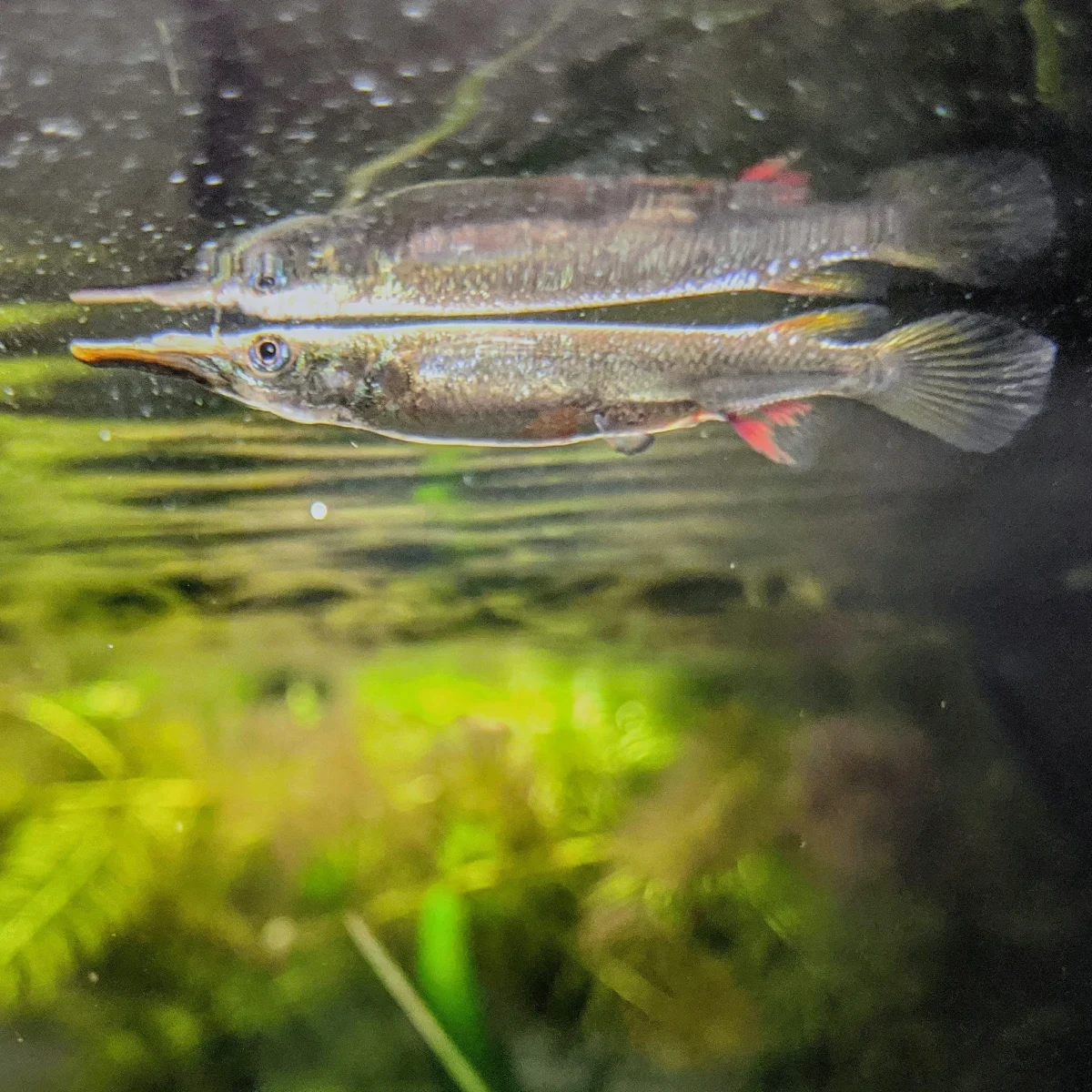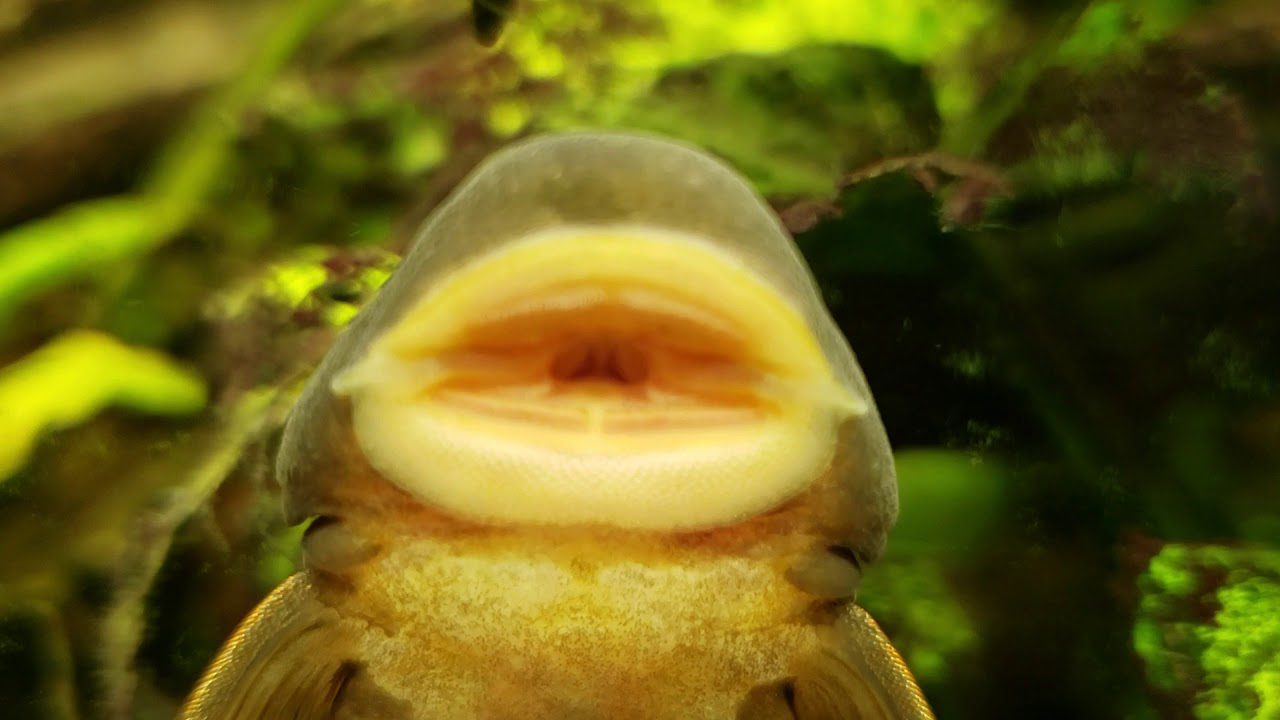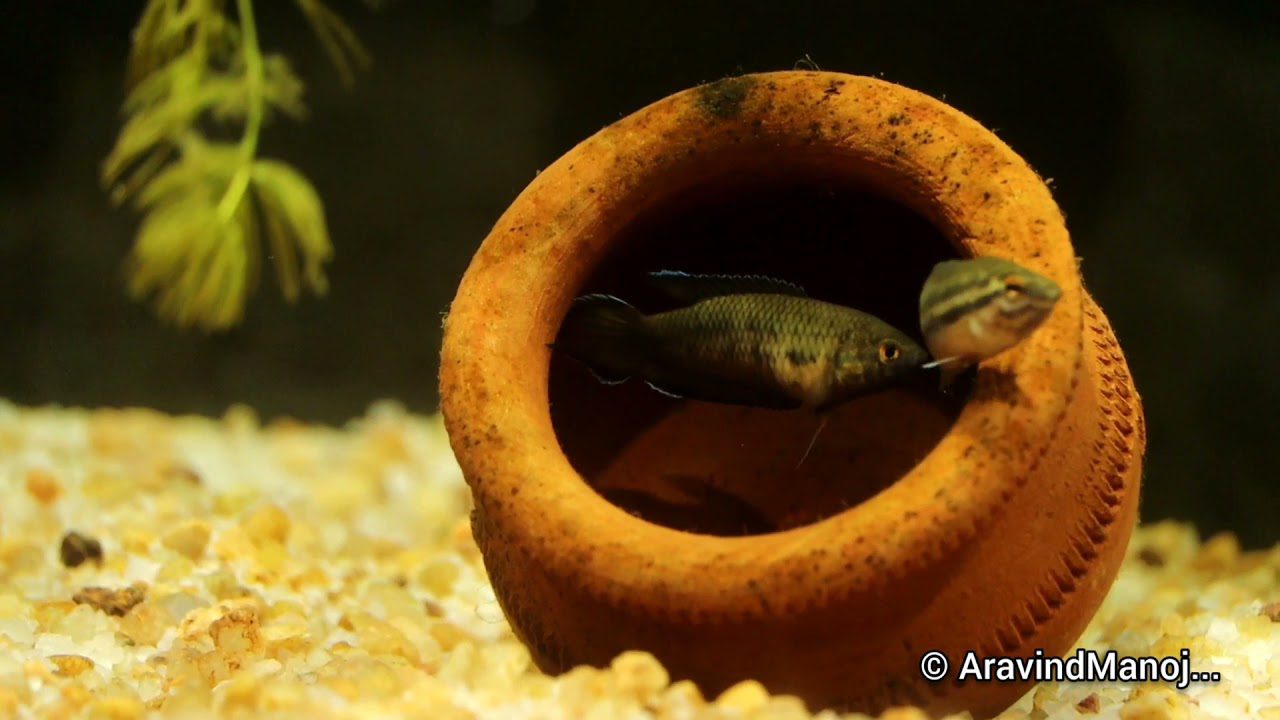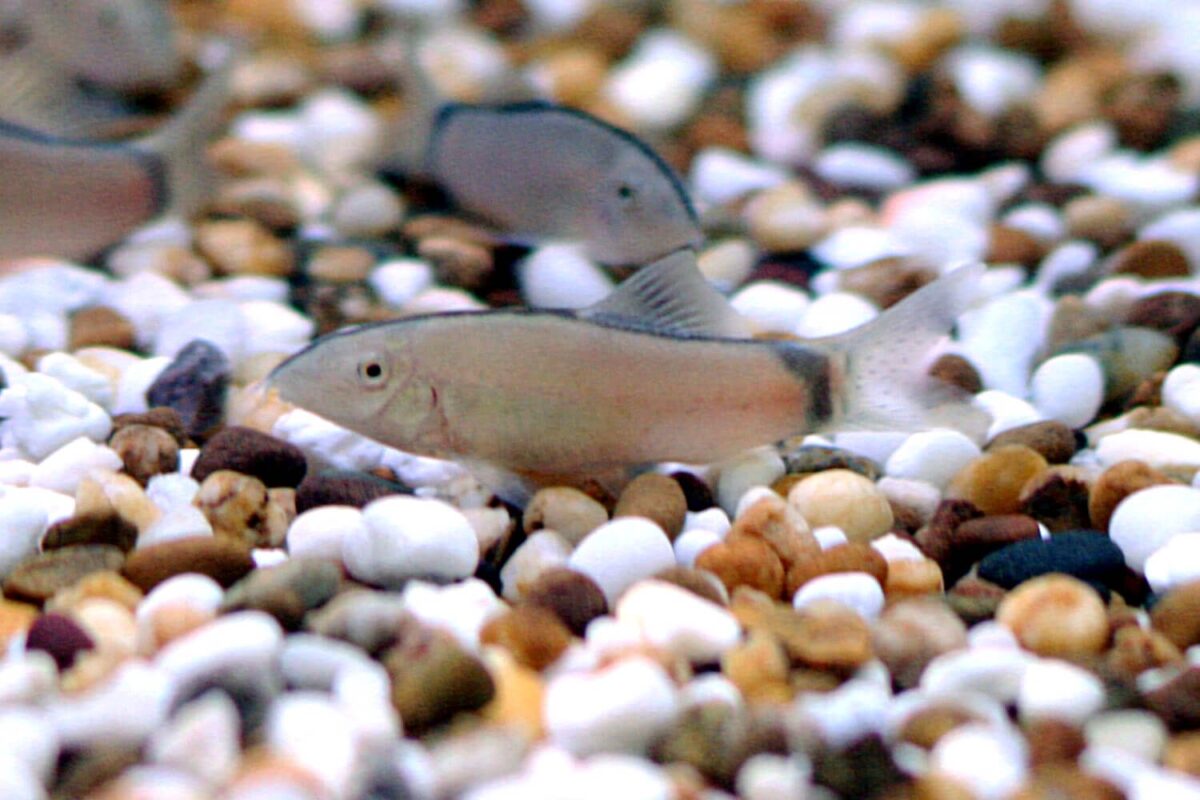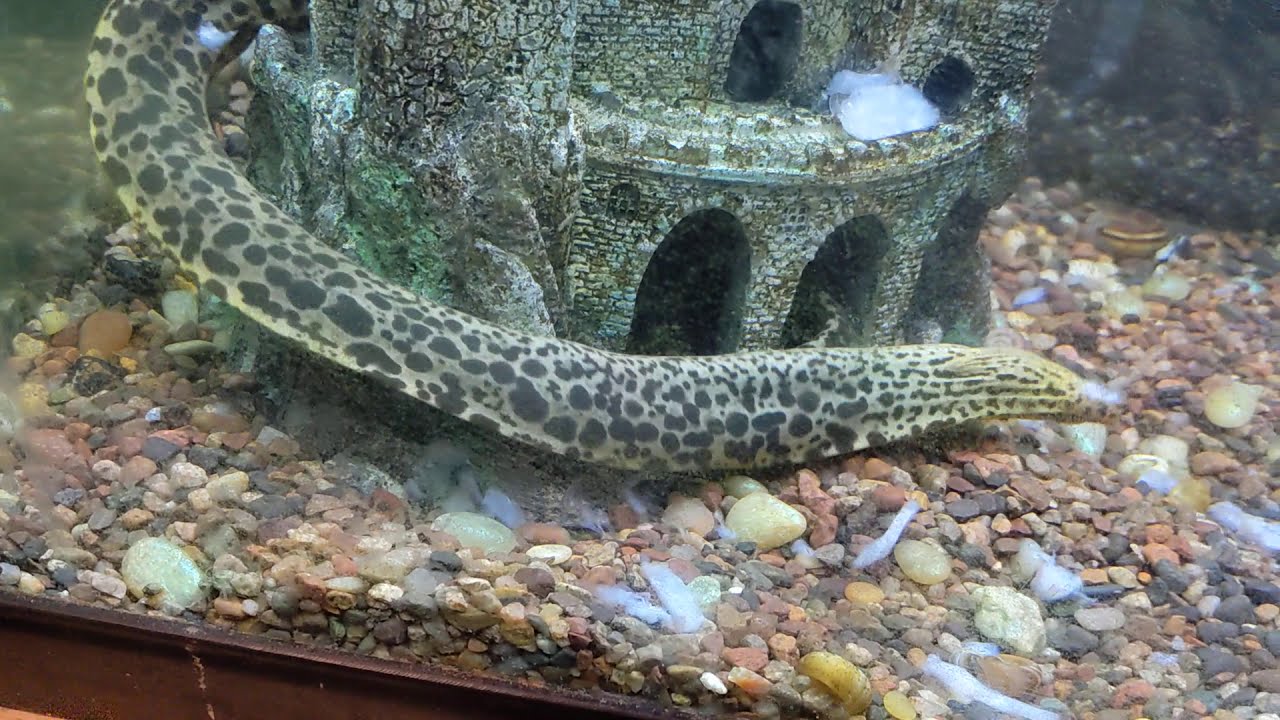The Wrestling Halfbeak, scientifically known as Dermogenys pusilla, is a captivating freshwater species that has gained popularity among aquarists. With its intriguing physical characteristics and charming behaviour, this unique Australian native fish is a fantastic addition to any aquarium. This comprehensive care guide will provide you with essential information on how to successfully care for and breed Wrestling Halfbeaks in your home aquarium.
Whether you are a beginner or an experienced hobbyist, understanding the specific requirements of halfbeak fish is crucial to maintaining their health and well-being. From setting up the perfect aquarium environment to providing the proper diet and breeding conditions, this guide will cover all aspects of caring for Wrestling Halfbeaks.
Key Takeaways:
- Proper care and breeding techniques are essential for the well-being of Wrestling Halfbeaks.
- Wrestling Halfbeaks are unique Australian native fish known for their captivating appearance and behaviour.
- Creating a suitable aquarium environment with the proper water parameters is crucial for their health.
- Understanding the physical characteristics and behaviour of Wrestling Halfbeaks can help you provide appropriate care.
- Proper nutrition, including a balanced diet, plays a vital role in maintaining the health of Wrestling Halfbeaks.
Introduction
Welcome to the fascinating world of the Wrestling Halfbeak (Dermogenys pusilla). This unique freshwater fish has captured the attention of aquarium enthusiasts around the world. In this section, we will explore the wrestling halfbeak’s taxonomy and classification and explore its natural habitat and distribution. By understanding these aspects, you can provide the optimal environment for this captivating species in your aquarium.
Taxonomy and Classification
The Wrestling Halfbeak, scientifically known as Dermogenys pusilla, belongs to the family Zenarchopteridae. It is a ray-finned fish, classified under the order Beloniformes. The species name, “pusilla,” reflects its relatively small size compared to other Halfbeak fish. This unique taxonomy distinguishes the Wrestling Halfbeak from other aquatic species and makes it an intriguing addition to any aquarium.
Natural Habitat and Distribution
The Wrestling Halfbeak is a native species to the freshwater bodies of Southeast Asia. It can be found in Indonesia, Malaysia, Thailand, and the Philippines. This species inhabits slow-moving rivers, streams, and shallow coastal waters. Wrestling Halfbeaks thrive in habitats rich in aquatic plants, where they can find shelter and ample food sources.
These fish have also been introduced to other regions worldwide due to their popularity in the aquarium trade. In these introduced habitats, they can adapt and establish breeding populations under suitable conditions. However, it is essential to note that the natural habitat and distribution of Wrestling Halfbeaks primarily originate from their native range in Southeast Asia.
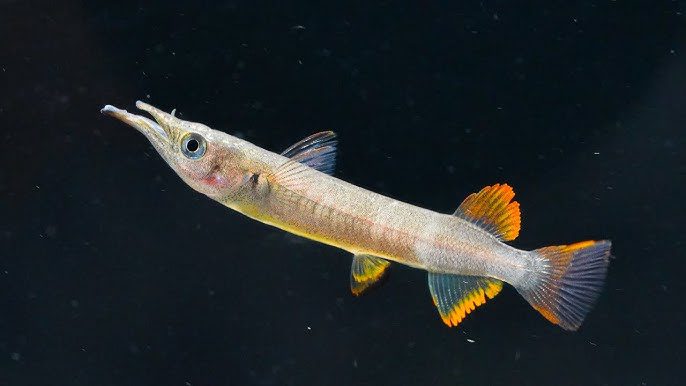
Note: The image above showcases the wrestling halfbeak’s stunning appearance, hinting at the beauty that awaits aquarists who choose to keep this species.
Physical Description and Characteristics
The Wrestling Halfbeak, also known as Dermogenys pusilla, is a fascinating freshwater fish with unique physical attributes. This section will overview its colours, markings, gender differences, varieties, grades, behaviour, and temperament.
Colours and Markings
The Wrestling Halfbeak boasts a shimmering silver body complemented by a contrasting dark band that extends horizontally along its sides. This band, typically black or brown, adds a striking visual element to the fish’s appearance.
Gender Differences
When it comes to gender differences, the male Wrestling Halfbeak is distinguishable by its elongated anal fin, which forms an elegant sword-like extension. Females, on the other hand, possess a shorter anal fin. Additionally, males typically exhibit more vibrant colours and are slightly larger than females.
Varieties
The Wrestling Halfbeak has various captivating varieties that showcase unique colour patterns and fin shapes. Popular varieties include the Redtail Halfbeak, which features a distinctive reddish tail, and the Snakeskin Halfbeak, characterized by its striking pattern resembling snake scales.
Grades
Wrestling Halfbeaks are often graded within each variety based on their overall quality and appearance. Higher-grade specimens exhibit vibrant colours, well-defined markings, and symmetrical fins, while lower-grade individuals may display less intense colours and irregular patterns.
Behaviour and Temperament
Wrestling Halfbeaks are active and lively swimmers who constantly explore their surroundings. They are known for their jumping ability, so a secure aquarium lid is essential. These fish are generally peaceful and can be kept in community tanks with similarly sized, non-aggressive species. However, males may occasionally display territorial behaviour towards other males.
Aquarium Requirements
Proper aquarium setup is essential for the well-being of Wrestling Halfbeaks. This section will discuss the requirements to create an optimal environment for these unique fish.
Ideal Tank Size and Layout
For Wrestling Halfbeaks, it is recommended that a spacious aquarium be provided to accommodate their active nature. A tank with a minimum capacity of 20 gallons is suitable for a small group of these fish. The tank should have a rectangular shape to allow for sufficient swimming space. Additionally, providing hiding spots such as driftwood, rocks, and plants will help create a natural and secure environment.
Water Parameters
Wrestling Halfbeaks thrive in freshwater aquariums with stable water conditions. Their ideal temperature range is between 72-78°F (22-25.5°C). They maintain a pH level of 7.0-8.0 and a water hardness of 10-20 dKH. Regular water testing and appropriate water changes are necessary to keep the parameters within the recommended range.
Suitable Tank Mates and Potential Conflicts
When choosing tank mates for Wrestling Halfbeaks, it is crucial to consider their peaceful nature. They are compatible with other peaceful community fish, such as tetras, swordtails, and mollies. However, avoid keeping them with aggressive or fin-nipping species, which can lead to stress and injury.
Compatibility with Live Plants and Invertebrates
Wrestling Halfbeaks generally do well with live plants in the aquarium. Plants provide natural cover and oxygenation and improve the overall water quality. Consider adding hardy plants like Java fern, Anubias, and Vallisneria. Invertebrates can coexist with species like Ghost shrimp and Nerite snails, adding diversity to the tank ecosystem.
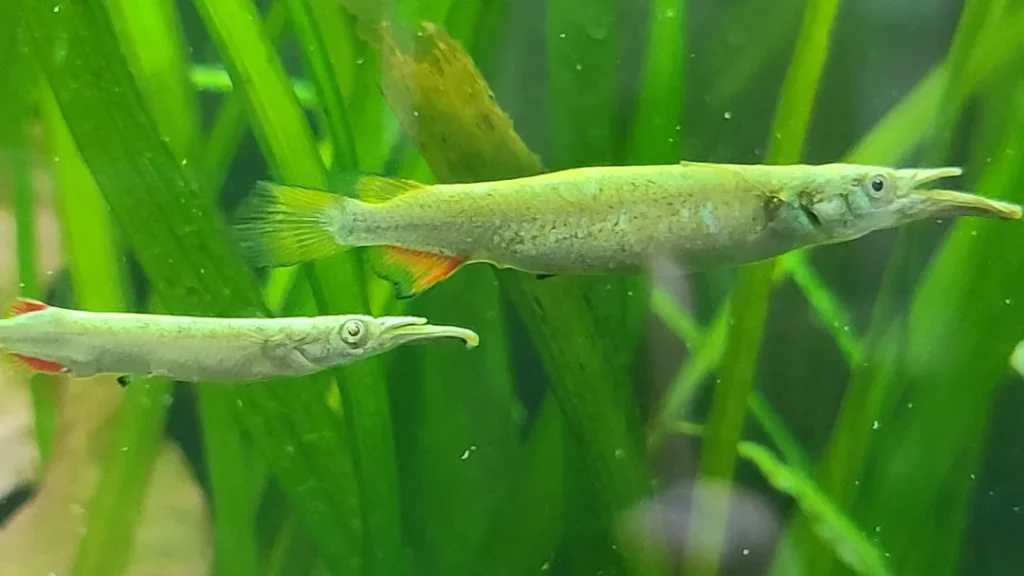
Creating an ideal habitat for your Wrestling Halfbeaks will promote their health and enhance their natural behaviour and beauty.
Care
Understanding their care requirements is crucial to ensuring the health and well-being of your Wrestling Halfbeaks. By following the recommended care guidelines, you can create a suitable environment for these unique fish and minimize the risk of common diseases.
Diseases
Like any other fish species, Wrestling Halfbeaks are susceptible to certain diseases. Awareness of these common diseases and their symptoms can help you detect and address potential health issues.
- Fungus: Fungal infections often manifest as white or grey cotton-like growth on the fish’s body. It is essential to address fungal infections promptly, as they can lead to more severe health complications.
- Ich (White Spot Disease): Ich is characterized by small white dots on the fish’s body and fins. Prompt treatment with effective medication is crucial to prevent the spread of this highly contagious disease.
- Fin Rot: Fin rot is a common bacterial infection affecting fish fins and tails. It may appear as torn, frayed, or disintegrating fin tissue. Maintaining excellent water quality and providing a stress-free environment are crucial to preventing fin rot.
- Velvet: Velvet is caused by a parasitic infection characterized by a fine, dust-like coating on the fish’s skin. Affected fish may exhibit excessive scratching and flicking against objects in the aquarium. Prompt treatment with anti-parasitic medication is necessary to eradicate the parasite.
- Columnaris (Mouth and Body Fungus): Columnaris is a bacterial infection that affects the fish’s mouth, fins, and body. It typically appears as cotton-like growth around the mouth and may lead to ulcers and abscesses. Treating columnaris promptly is crucial to prevent the infection from spreading to other fish.
Regularly monitoring your Wrestling Halfbeaks’ health, maintaining excellent water quality, and providing a balanced diet are crucial in preventing diseases. If you notice any signs of illness, such as abnormal behaviour, loss of appetite, or physical abnormalities, you should consult a vet or experienced aquarist for proper diagnosis and treatment.
Diet and Feeding
Proper nutrition is crucial for the well-being of Wrestling Halfbeaks. In this section, we will cover this species’ dietary preferences and provide recommendations for suitable foods and feeding schedules. Additionally, we will offer tips on ensuring a balanced and nutritious diet for your Wrestling Halfbeaks.
Dietary Preferences
The Wrestling Halfbeak is an omnivorous species with a varied diet. It enjoys consuming both live and frozen foods, as well as high-quality dry pellets and flakes. These fish prefer small invertebrates, such as mosquito larvae and brine shrimp, but they also consume algae and plant matter.
Recommended Foods and Feeding Schedule
To ensure a balanced diet, it is recommended that a mix of live/frozen foods and dry pellets/flakes be offered. Suitable live and frozen foods include brine shrimp, bloodworms, daphnia, and small insects. High-quality commercial foods formulated explicitly for freshwater fish can also be provided.
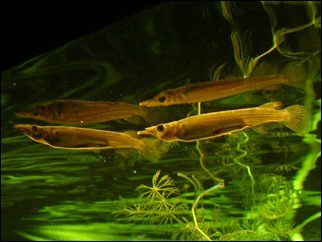
Feed your Wrestling Halfbeaks small portions 2-3 times a day. It is important not to overfeed them, as this can lead to obesity and other health issues. Observing their feeding habits will help determine the appropriate portion size for your fish.
Tips on Ensuring a Balanced and Nutritious Diet
- Offer a variety of foods to ensure a diverse nutrient intake.
- Rotate between live/frozen foods and commercial pellets/flakes to provide different textures and flavours.
- Avoid overfeeding by offering small portions at regular intervals.
- Monitor your fish’s body condition and adjust the feeding regimen accordingly.
- Remove any uneaten food after each feeding session to maintain water quality.
By following these recommendations and providing a nutritious diet, you can ensure the health and vitality of your Wrestling Halfbeaks.
Breeding and Reproduction
Sexing
Identifying the sex of the Wrestling Halfbeak is crucial for successful breeding. Males and females exhibit distinct characteristics that can aid in sex determination. Males typically have a more vibrant colouration, with vibrant fins and a longer lower jaw. Females, on the other hand, have a rounder body shape and a less pronounced lower jaw. By closely observing these physical attributes, aquarists can accurately assess their Wrestling Halfbeak population.
Breeding Behavior and Conditions
The breeding behaviour of Wrestling Halfbeaks is intriguing to witness. During courtship, the male displays vibrant colours and performs intricate courtship displays to attract the female. This includes chasing, vibrating their fins, and even leaping out of the water. Once the female is ready to release her eggs, she initiates the mating process.
To encourage successful breeding, suitable breeding conditions must be maintained. This includes providing a spacious aquarium with plenty of hiding spots and vegetation. Proper water parameters, such as temperature, pH, and hardness, must also be maintained to mimic their natural habitat. Providing a well-balanced diet and ensuring optimal water quality will create an ideal environment for breeding.
Care of Eggs and Fry
After successful mating, the female Wrestling Halfbeak will lay a cluster of eggs. The eggs are adhesive and will attach to aquatic plants or other surfaces within the aquarium. Protecting the eggs from potential predation is vital by separating them from adult fish and other species. The eggs will typically hatch within a few days, and the fry will be free-swimming shortly after. At this stage, it is crucial to provide appropriate nutrition in the form of finely crushed flake food or live baby brine shrimp to support the growth and development of the fry.
Challenges in Breeding in Captivity
Breeding Wrestling Halfbeaks in captivity can present specific challenges. One common challenge is the selective breeding of desired traits, such as colouration or fin shape, which requires careful selection of breeding pairs. Another challenge is providing suitable environmental stimulation to trigger breeding behaviour in captive populations. Additionally, ensuring the survival and growth of the fry can be demanding due to their delicate nature and specific feeding requirements.
Despite these challenges, aquarists can successfully breed and contribute to preserving this unique freshwater species with proper research, attention to water parameters, and careful observation.
Summary
After exploring the fascinating world of the wrestling halfbeak (Dermogenys pusilla), we have gained valuable insights into this unique freshwater species. This article covers various aspects of caring for and breeding the Wrestling Halfbeak in your home aquarium.
Understanding the physical description and characteristics of this fish is crucial. From their vibrant colours and markings to their distinct gender differences, the Wrestling Halfbeak is truly a standout species. We also explored the different varieties and grades available, giving you options.
Creating the perfect environment in your aquarium is essential for the well-being of your Wrestling Halfbeaks. We have discussed the ideal tank size, layout, and the necessary water parameters. Furthermore, we provided insights into suitable tank mates and compatibility with live plants and invertebrates.
To ensure the health of your Wrestling Halfbeaks, we explored their dietary preferences and recommended foods. Developing a balanced and nutritious feeding schedule is critical to their overall well-being. Additionally, we addressed common diseases and offered valuable tips on caring for this species.
Finally, if you are interested in breeding the Wrestling Halfbeak, we guided sexing, breeding behaviour and conditions, and the care of eggs and fry. While breeding this species in captivity can pose challenges, it can also be rewarding with the right approach.
With this article’s comprehensive information and key takeaways, you are well-equipped to care for and breed the Wrestling Halfbeak successfully. Enjoy the distinctive beauty and captivating nature of this Australian native fish in your home aquarium.

